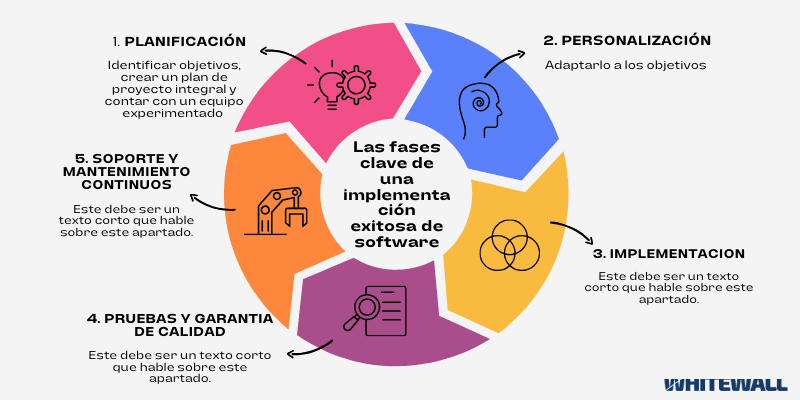
The Key Phases of Successful Software Implementation
18 Sep 2023 | By: José González
In today’s digital age, software plays a pivotal role in enhancing productivity, streamlining operations, and gaining a competitive edge. Whether you’re a small business or a large enterprise, successfully implementing software is crucial for maximizing its benefits. However, the path to a seamless software integration is often complex and requires a well-structured approach.
In this blog post, we will delve into the key phases of a successful software implementation process. From initial planning and customization to the final deployment and ongoing support, understanding and managing these phases is essential for a successful software integration.
Phase 1: Planning
Before diving into any software implementation project, meticulous planning is a must. During this phase:
- Identify clear objectives and define what success looks like for your software implementation.
- Create a comprehensive project plan, including timelines, budgets, and resource allocation.
- Assemble a dedicated team with the right skills and expertise to carry out the implementation.
Phase 2: Customization
Every organization is unique, and so are its software needs. Customization ensures that the software aligns perfectly with your business processes. During this phase:
- Tailor the software to your specific requirements, considering workflow, data integration, and user experience.
- Work closely with the software provider to configure settings, modules, and features to match your needs.
- Test the customized software thoroughly to ensure it meets your business goals.
Phase 3: Deployment
With customization completed, it’s time to roll out the software across your organization. Here’s what you should focus on during deployment:
- Ensure a smooth transition by providing training and support to end-users.
- Monitor the implementation closely to identify and address any unforeseen issues promptly.
- Gradually deploy the software to different departments or teams, allowing for gradual adaptation.
Phase 4: Testing and Quality Assurance
Testing and quality assurance are ongoing processes throughout the implementation. Key activities include:
- Rigorously testing the software for bugs, glitches, and compatibility issues.
- Conducting user acceptance testing (UAT) to verify that the software meets end-users’ expectations.
- Continuously refining and improving the software based on user feedback and performance metrics.
Phase 5: Ongoing Support and Maintenance
Software implementation doesn’t end with deployment; it’s an ongoing journey. In this phase:
- Establish a system for addressing user concerns, troubleshooting issues, and providing technical support.
- Regularly update the software to incorporate new features, security patches, and performance improvements.
- Monitor and analyze the software’s performance to ensure it continues to meet your evolving business needs.
Conclusion
Successful software implementation is a multi-faceted process that requires careful planning, customization, deployment, and ongoing support. By following these key phases, you can ensure a smoother integration process, maximize the benefits of your software, and keep your organization ahead of the curve in today’s rapidly evolving tech landscape.
Remember that every software implementation is unique, and flexibility is key. Adapting to unexpected challenges and learning from the process will help your organization become more agile and efficient in the long run. If you’re considering a software implementation project, take your time, and invest in the right resources to make it a success.
Subscribe



